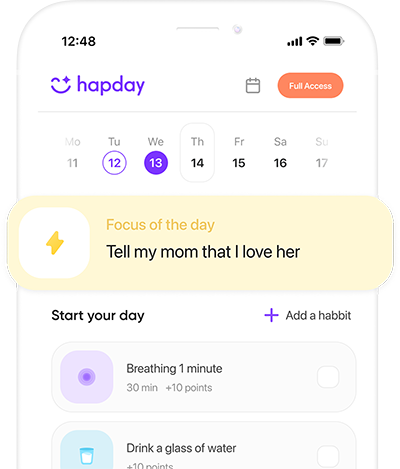In today’s whirlwind world, burnout is an all-too-common plight many of us face. Coined by the World Health Organization, burnout is essentially a crisis born from unrelenting stress at work — although its reach doesn’t stop at the office. It’s like a trifecta of troubles: diminished energy and exhaustion, growing detachment or negativity towards one’s job, and a dip in professional effectiveness. With life’s demands ever-increasing, nurturing self-care practices isn’t just helpful; it’s essential for both mental and physical well-being, keeping the perils of burnout at bay.
Table of Contents
- Digging Deeper into Burnout
- Spotting the Signs
- Self-Care: The Multi-Layered Remedy
- The Role of Organizations in Combating Burnout
- Embrace Personalized Self-Care
- Commitment: The Road to Recovery
- Conclusion
Digging Deeper into Burnout
Burnout isn’t just another buzzword. It’s a very real condition with serious ramifications. A Gallup poll in 2022 revealed that about 44% of employees often feel the weight of burnout, while 23% experience it constantly. It’s not exclusive to high-stress professionals; anyone juggling substantial responsibilities is at risk. It’s more than just a heavy workload — it’s often about a disconnect between what we value and what we’re asked to do.
The ripple effects of burnout are massive, affecting everything from productivity and attendance to mental and physical health. Research published in PLOS ONE connects burnout with mental health struggles like depression and anxiety, as well as physical issues such as heart disease. Thus, tackling burnout is crucial for both personal health and broader societal productivity.
Spotting the Signs
Recognizing burnout early can make all the difference. Be on the lookout for fatigue, insomnia, forgetfulness, and constant sickness — these are just a few red flags. Emotionally, you might notice apathy, hopelessness, detachment, or irritability. When it comes to behavior, withdrawing from responsibilities, procrastination, or resorting to substances might be indicators.
Armed with this awareness, we can take action to address burnout before it fully takes hold. A study in the Journal of Applied Psychology highlights that early intervention truly makes a difference, underscoring the importance of being attuned to our own well-being.
Self-Care: The Multi-Layered Remedy
Self-care isn’t just about indulgence; it’s a planned, deliberate act of tending to one’s mental and physical health. Here are some vital self-care practices that can shield you against burnout:
1. Physical Self-Care
- Stay Active: Regular exercise reduces anxiety, combats depression, and boosts mood. Aim for at least 150 minutes of moderate exercise each week, whether it’s a brisk walk or a calming yoga session.
- Sleep Well: Quality sleep is your health’s best friend. Adults should get about 7-9 hours a night. To get there, maintain a consistent sleep routine and create a serene sleeping environment.
- Eat and Drink for Health: Fuel your body with a balanced diet full of fruits, vegetables, proteins, and whole grains. Staying hydrated is equally crucial for mood and cognitive function.
2. Emotional Self-Care
- Mindfulness and Meditation: Techniques like meditation and deep breathing can greatly reduce stress and sharpen emotional control. Studies show these practices improve anxiety, depression, and even physical pain.
- Build Supportive Bonds: Relationships matter. Spend time with family and friends, and don’t hesitate to seek support. Community groups and shared-interest activities can bolster your sense of belonging.
- Set Boundaries: Learn to say no and carve out personal time to safeguard your emotional health. This might mean negotiating workload expectations or setting clear boundaries at home.
3. Mental Self-Care
- Feed Your Curiosity: Whether it’s a new hobby or a passion project, engaging your mind keeps you revitalized and breaks the monotony.
- Foster Gratitude: Keeping a gratitude journal or reflecting on the positives can cultivate happiness. Science links gratitude with increased joy and overall mental health.
4. Professional Self-Care
- Balance Your Work Life: Finding harmony between work and personal life can stave off burnout. Sensible working hours, regular breaks, and leisure activities are key.
- Pursue Growth Opportunities: Seek out professional development to enrich job satisfaction and counter feelings of stagnation.
- Utilize Resources: Make the most of any mental health and support services available through your workplace.
The Role of Organizations in Combating Burnout
Individuals aren’t the only ones with a role to play—organizations must also take responsibility by fostering supportive work environments:
- Cultivate a Positive Workplace: Champion open dialogue, embrace feedback, and ensure inclusivity and respect to enhance job satisfaction.
- Support Rest and Rejuvenation: Encourage breaks and the use of vacation time. Scientific evidence suggests time off boosts happiness and reduces burnout.
- Provide Training and Support: Offer resources and training for resilience and stress management.
- Acknowledge Achievements: Regular recognition of hard work can do wonders for motivation and reduce feelings of alienation.
Embrace Personalized Self-Care
Remember, self-care is not one-size-fits-all. Tailor your approach to suit your unique needs and circumstances. Trial and error in discovering what bolsters your well-being can lead to a robust personal self-care regimen.
Commitment: The Road to Recovery
Recovering from burnout is an ongoing commitment to balancing and nurturing your well-being through thoughtful self-care practices. It requires vigilance and prioritizing personal health amidst life’s complexities, empowering us to face challenges with resilience.
Conclusion
Addressing burnout requires a concerted effort from both individuals and organizations. By identifying its signs, adopting tailored self-care methods, and fostering supportive environments, we can mitigate burnout’s effects, ensuring a healthier, more balanced life. Let’s prioritize self-care as essential, rather than optional, paving the way for a future where well-being and productivity flourish side by side.

